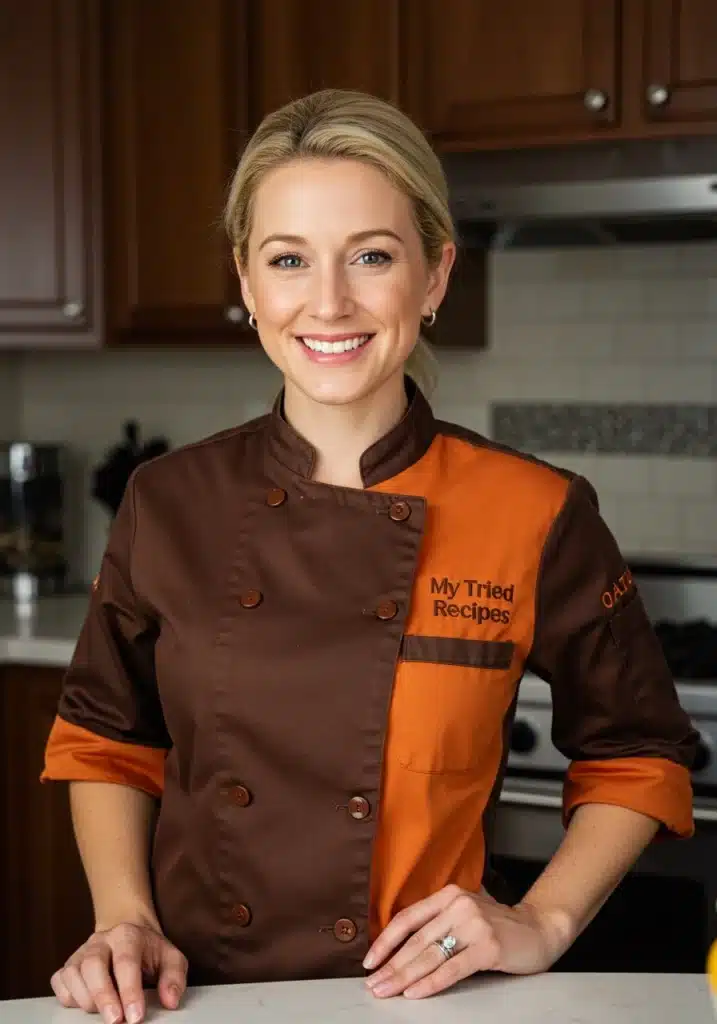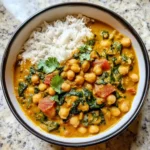It all started with a quest for a healthier, yet utterly satisfying, weeknight dinner. My family, like many, adores a good stir-fry – the vibrant colours, the crisp-tender vegetables, the savory sauce clinging to every bite. But we were also looking for ways to incorporate more vegetables and reduce our carb intake without sacrificing flavour or that comforting feeling a good meal provides. Enter the humble spaghetti squash. I’ll admit, I was skeptical at first. Could this stringy gourd truly replace noodles in a dish as dynamic as a stir-fry? The first attempt was, well, a learning experience. But with a few tweaks to the cooking method for the squash and perfecting the balance of the stir-fry sauce, a new family favourite was born: this Spaghetti Squash Stir-Fry. The kids, who usually turn their noses up at anything overtly “healthy,” were surprisingly enthusiastic. They loved twirling the spaghetti squash strands, and the familiar, delicious taste of the stir-fry won them over completely. My partner, a discerning stir-fry aficionado, gave it a resounding two thumbs up, praising its lightness yet deeply satisfying flavour. It’s become a staple in our meal rotation, a testament to how delicious healthy eating can be. This recipe isn’t just about a meal; it’s about discovering a new way to enjoy an old favourite, packed with goodness and bursting with flavour that will have everyone asking for seconds. It’s a culinary adventure that proves nutritious food can be incredibly exciting and, most importantly, absolutely delicious.
Ingredients
- 1 medium Spaghetti Squash (about 2.5-3 lbs): This versatile winter squash, when cooked, yields strands resembling spaghetti, forming the perfect low-carb base for our stir-fry.
- 1 lb Boneless, Skinless Chicken Breasts (or Tofu/Shrimp): Sliced thinly against the grain for tenderness. This is our primary protein, but feel free to substitute with firm tofu (pressed and cubed) for a vegetarian option, or succulent shrimp.
- 1 tablespoon Olive Oil or Avocado Oil: For roasting the spaghetti squash and for stir-frying. A neutral-flavoured oil with a high smoke point is ideal.
- 1 Red Bell Pepper: Cored, seeded, and thinly sliced. Adds sweetness, vibrant color, and a good dose of Vitamin C.
- 1 Yellow or Orange Bell Pepper: Cored, seeded, and thinly sliced. Complements the red pepper in flavour and visual appeal.
- 1 cup Broccoli Florets: Cut into bite-sized pieces. A cruciferous powerhouse that adds a lovely green and a satisfying crunch.
- 1 cup Snap Peas or Snow Peas: Trimmed. These provide a delightful sweetness and crisp texture.
- 1/2 cup Carrots: Julienned or thinly sliced into coins. Adds a subtle sweetness, color, and beta-carotene.
- 1/2 medium Red Onion: Thinly sliced. Offers a pungent bite that mellows when cooked.
- 3 cloves Garlic: Minced. An essential aromatic for any stir-fry, providing a foundational flavour.
- 1 tablespoon Ginger: Freshly grated or minced. Adds a warm, zesty kick that is characteristic of stir-fry dishes.
- 2 tablespoons Toasted Sesame Oil: For flavouring the stir-fry sauce, adding a nutty, aromatic depth.
- 1/4 cup Low-Sodium Soy Sauce or Tamari: The savory backbone of our sauce. Tamari keeps it gluten-free.
- 2 tablespoons Rice Vinegar: Adds a tangy brightness to balance the savory soy sauce.
- 1 tablespoon Honey or Maple Syrup: For a touch of sweetness to round out the sauce. Adjust to your preference.
- 1 teaspoon Sriracha or Chili Garlic Sauce (optional): For those who like a bit of heat. Add more or less to suit your taste.
- 1 tablespoon Cornstarch (mixed with 2 tablespoons cold water – optional slurry): To thicken the sauce if desired, giving it that glossy, coating consistency.
- For Garnish (optional):
- 2 tablespoons Sesame Seeds: Toasted, for a nutty crunch and visual appeal.
- 2 Green Onions: Thinly sliced, for a fresh, mild onion flavour.
Instructions
1. Prepare and Cook the Spaghetti Squash:
- Preheat your oven to 400°F (200°C). Line a baking sheet with parchment paper for easy cleanup. This high heat helps the squash cook efficiently and develop a slightly roasted flavour.
- Carefully cut the spaghetti squash in half lengthwise. This can be tricky as the squash is hard. Use a large, sharp chef’s knife. Insert the tip into the middle and carefully rock the knife down, then rotate and repeat on the other side. Alternatively, pierce it a few times with a knife and microwave for 3-5 minutes to soften it slightly before cutting.
- Scoop out the seeds and stringy pulp from the center of each half using a spoon, similar to preparing a pumpkin. The cavity should be clean.
- Brush the cut surfaces of the squash lightly with about 1/2 tablespoon of olive oil (or avocado oil) and season with a pinch of salt and pepper. This enhances flavour and helps prevent sticking.
- Place the squash halves cut-side down on the prepared baking sheet. Cooking cut-side down helps to steam the inside, making the strands tender.
- Roast for 35-50 minutes, or until the squash is tender. The exact time will depend on the size of your squash. You can check for doneness by piercing the skin with a fork; it should go in easily. Another test is to press gently on the skin; it should give slightly.
- Once cooked, remove the squash from the oven and let it cool slightly – just enough so you can handle it (about 10-15 minutes). If it’s too hot, it will be difficult to shred.
- Using a fork, scrape the flesh of the squash lengthwise. The strands will separate easily, resembling spaghetti. Scrape all the flesh out into a large bowl and set aside. You should have about 4-5 cups of spaghetti squash strands. Try to keep the strands as long as possible for the best “noodle” effect.
2. Prepare the Chicken and Other Ingredients (while squash is roasting/cooling):
- Slice the chicken breasts thinly against the grain. This technique shortens the muscle fibers, resulting in more tender chicken. Aim for pieces about 1/4-inch thick.
- Optional Marination: In a small bowl, toss the sliced chicken with 1 teaspoon of soy sauce and 1 teaspoon of cornstarch (if not using it for the sauce later). This quick marinade adds flavour and helps the chicken stay moist. Let it sit for at least 10 minutes.
- Prepare all your vegetables: Wash, chop, and slice the bell peppers, broccoli, snap peas, carrots, and red onion. Mince the garlic and grate the ginger. Having everything prepped and ready (“mise en place”) is crucial for a successful stir-fry, as the cooking process is fast.
- Prepare the Stir-Fry Sauce: In a small bowl, whisk together the toasted sesame oil, low-sodium soy sauce (or tamari), rice vinegar, honey (or maple syrup), and sriracha (if using). If you plan to use cornstarch to thicken the sauce, prepare the slurry by mixing 1 tablespoon of cornstarch with 2 tablespoons of cold water in a separate small bowl until smooth. Set both aside.
3. Cook the Stir-Fry:
- Heat 1/2 tablespoon of olive oil or avocado oil in a large skillet or wok over medium-high heat. The pan should be hot enough that a drop of water evaporates quickly. Using a wok is ideal for stir-frying due to its shape and heat distribution, but a large, heavy-bottomed skillet will also work well.
- Add the sliced chicken to the hot pan in a single layer. Avoid overcrowding the pan, as this will steam the chicken instead of searing it. Cook in batches if necessary. Cook for 2-3 minutes per side, until golden brown and cooked through. Remove the chicken from the skillet and set it aside on a plate.
- Add the remaining olive oil (if needed) to the skillet. Add the sliced red onion and carrots. Stir-fry for 2-3 minutes until they begin to soften slightly. These are harder vegetables and benefit from a little extra cooking time.
- Add the broccoli florets and bell peppers to the skillet. Continue to stir-fry for another 3-4 minutes. You want the vegetables to be crisp-tender – cooked through but still retaining a slight bite and their vibrant color.
- Add the minced garlic, grated ginger, and snap peas. Stir-fry for another 1-2 minutes until fragrant. Be careful not to burn the garlic and ginger, as this can make them bitter. The snap peas need very little cooking time to retain their crunch.
- Return the cooked chicken to the skillet with the vegetables. Toss everything together to combine.
- Pour the prepared stir-fry sauce over the chicken and vegetables. Stir well to ensure everything is evenly coated. Bring the sauce to a simmer.
- If using the cornstarch slurry for a thicker sauce: Give the slurry a quick whisk (as cornstarch settles) and pour it into the simmering sauce. Stir continuously for about 1 minute, or until the sauce thickens to your desired consistency and becomes glossy.
- Add the cooked spaghetti squash strands to the skillet. Gently toss everything together to combine the “noodles” with the chicken, vegetables, and sauce. Be careful not to overmix, as this can break up the spaghetti squash strands too much. Cook for another 1-2 minutes, just enough to heat the squash through and allow it to absorb some of the sauce flavours.
4. Serve:
- Divide the Spaghetti Squash Stir-Fry among serving plates or bowls.
- Garnish with toasted sesame seeds and freshly sliced green onions, if desired. These garnishes add a final touch of flavour, texture, and visual appeal.
- Serve immediately and enjoy your healthy and delicious meal!
Nutrition Facts
- Servings: 4
- Calories per serving: Approximately 380-450 kcal (This can vary based on the exact size of the squash, amount of oil used, and if sweetener is added to the sauce).
- Protein: A good source of lean protein, primarily from the chicken, essential for muscle repair and satiety.
- Fiber: High in dietary fiber from the spaghetti squash and vegetables, aiding digestion and promoting fullness.
- Vitamins: Rich in Vitamin C (from bell peppers and broccoli) and Vitamin A (from carrots and squash), supporting immune function and vision.
- Low-Carbohydrate: Significantly lower in carbohydrates compared to traditional noodle-based stir-fries, making it a great option for low-carb or keto-friendly diets.
- Healthy Fats: Contains healthy fats from sesame oil and avocado/olive oil, beneficial for heart health.
Preparation time
- Total Preparation & Cooking Time: Approximately 1 hour 15 minutes to 1 hour 30 minutes
- Spaghetti Squash Roasting: 40-55 minutes (includes prep like cutting and seeding)
- Ingredient Chopping & Prep: 15-20 minutes (can be done while squash roasts)
- Stir-Frying Time: 15-20 minutes
- This recipe involves a bit of upfront work with the squash, but the active cooking time for the stir-fry itself is relatively quick. Much of the squash cooking time is hands-off.
How to Serve
This Spaghetti Squash Stir-Fry is wonderfully versatile and can be served in several delightful ways to suit different preferences and occasions:
- As a Complete Meal:
- Serve generous portions in individual bowls. This is the simplest and most direct way to enjoy this hearty and satisfying dish. The combination of protein, vegetables, and spaghetti squash “noodles” makes it a well-rounded meal on its own.
- Family-Style Platter:
- Arrange the colourful stir-fry on a large platter for a beautiful family-style presentation. Allow everyone to serve themselves, encouraging interaction and appreciation for the vibrant dish.
- With Extra Toppings (Self-Serve Bar):
- Set out small bowls of additional toppings for customization. Ideas include:
- Chopped peanuts or cashews for extra crunch.
- Fresh cilantro leaves for a bright, herbaceous note.
- Extra sriracha or red pepper flakes for those who love more heat.
- A lime wedge on the side for a fresh citrusy squeeze.
- Set out small bowls of additional toppings for customization. Ideas include:
- Paired with Light Sides:
- While filling on its own, you could pair it with a light Asian-inspired cucumber salad for a refreshing contrast.
- A small bowl of miso soup could be a comforting starter.
- For Meal Prep:
- Portion into individual containers for easy grab-and-go lunches throughout the week. The flavours often meld and taste even better the next day. Reheat gently to maintain the texture of the spaghetti squash.
- Elevated Presentation for Guests:
- Carefully twirl the spaghetti squash strands with tongs to create a neat “nest” on the plate.
- Artfully arrange the chicken and colourful vegetables on top and around the squash.
- Drizzle a little extra sauce and garnish meticulously with sesame seeds and finely sliced green onions.
- Dietary Adaptations Display:
- If serving guests with different dietary needs, you can prepare a separate batch with tofu instead of chicken. Clearly label each version.
No matter how you choose to serve it, the vibrant colours and enticing aroma of this Spaghetti Squash Stir-Fry are sure to impress!
Additional tips
- Don’t Overcook the Spaghetti Squash: The key to perfect spaghetti squash “noodles” is to avoid overcooking. If it’s too soft, the strands will become mushy rather than distinct. Test for doneness by piercing with a fork; it should be tender but not falling apart. Slightly al dente is preferable for stir-fries.
- Dry Your Spaghetti Squash Strands: After shredding the squash, if it seems particularly watery, you can gently pat the strands with a paper towel or let them sit in a colander for a few minutes to drain excess moisture. This prevents the stir-fry from becoming too watery.
- High Heat is Your Friend for Stir-Frying: Authentic stir-frying relies on high heat to cook ingredients quickly, searing them and locking in flavours and crispness. Ensure your wok or skillet is properly heated before adding ingredients. Work in batches if necessary to maintain high heat and avoid steaming your food.
- “Mise en Place” is Non-Negotiable: Stir-frying is a fast cooking process. Have all your vegetables chopped, chicken sliced, aromatics minced, and sauce mixed before you start cooking. This organization prevents burning ingredients while you rush to prep the next item.
- Customize Your Vegetables: This recipe is a fantastic template. Feel free to swap in your favourite stir-fry friendly vegetables. Mushrooms (shiitake, cremini), bok choy, zucchini, asparagus, or even water chestnuts would be delicious additions or substitutions. Just be mindful of varying cooking times.
- Sauce Consistency Control: If you prefer a thicker sauce that clings more to the ingredients, the cornstarch slurry is your best bet. If you prefer a thinner sauce, you can omit it. You can also adjust the sweetness, saltiness, and tanginess of the sauce by tweaking the amounts of honey/maple syrup, soy sauce, and rice vinegar to your personal taste.
- Protein Power-Up or Swap: Besides chicken, this stir-fry works wonderfully with peeled and deveined shrimp (add them towards the end of cooking as they cook quickly), thinly sliced beef (like flank steak), or firm or extra-firm tofu (press it well and cube or pan-fry separately for crispness). For a vegetarian/vegan version, edamame or baked tempeh are also great protein sources.
- Make it Ahead (Partially): You can cook the spaghetti squash a day or two in advance. Shred it and store it in an airtight container in the refrigerator. You can also chop all the vegetables and prepare the sauce ahead of time. This makes the actual stir-frying process incredibly quick for a weeknight meal.
FAQ section
Q1: Can I make this Spaghetti Squash Stir-Fry vegetarian or vegan?
A1: Absolutely! To make it vegetarian, substitute the chicken with firm or extra-firm tofu (pressed and cubed), tempeh, or a generous helping of edamame. For a vegan version, ensure your sweetener is maple syrup (not honey) and use a vegan stir-fry sauce base (most soy sauces and tamari are vegan, but always check labels). The rest of the ingredients are naturally plant-based.
Q2: My spaghetti squash strands are watery. How can I prevent this?
A2: This is a common issue. After roasting and shredding the squash, if it seems overly moist, you can gently pat the strands with paper towels to absorb excess water. Alternatively, let the shredded squash sit in a colander for 10-15 minutes to drain. Some also find that salting the squash lightly after shredding and letting it sit helps draw out moisture (rinse and pat dry if you do this). Roasting cut-side down initially helps steam, but if very watery, you could try cut-side up for the last 10-15 minutes of roasting to help it dry out a bit.
Q3: How do I store and reheat leftovers?
A3: Store leftover Spaghetti Squash Stir-Fry in an airtight container in the refrigerator for up to 3-4 days. To reheat, you can gently warm it in a skillet over medium-low heat, stirring occasionally, until heated through. You can also microwave it, but be careful not to overcook, as the squash can become mushy. Adding a splash of water or broth when reheating on the stovetop can help refresh it.
Q4: Is spaghetti squash truly a good substitute for noodles in a stir-fry?
A4: While spaghetti squash doesn’t have the same chewy texture as traditional wheat or rice noodles, it offers a fantastic light, slightly sweet, and stringy alternative that absorbs sauces beautifully. It’s an excellent low-carb, gluten-free, and nutrient-dense option. Many find it a very satisfying substitute, especially when paired with flavorful ingredients like those in a stir-fry. The key is not to expect an exact replica of pasta texture, but to appreciate it for its unique qualities.
Q5: Can I use a different cooking method for the spaghetti squash?
A5: Yes, while roasting is preferred for flavour development, you can also cook spaghetti squash in the microwave for a quicker option. Pierce the squash all over with a fork, then microwave whole for 10-15 minutes (depending on size), rotating halfway through. Or, cut it in half, remove seeds, place cut-side down in a microwave-safe dish with about an inch of water, and microwave for 10-18 minutes until tender. The Instant Pot is another option: add 1 cup of water, place the trivet in, then the halved and seeded squash, and cook on high pressure for 7-9 minutes with a quick release.
Q6: My stir-fry vegetables always end up soggy. What am I doing wrong?
A6: Soggy vegetables are often due to a few common stir-fry mistakes:
* Overcrowding the pan: This lowers the temperature, causing vegetables to steam instead of sear. Cook in batches if needed.
* Not enough heat: Your wok or skillet needs to be very hot.
* Adding wet vegetables: Ensure your vegetables are dried thoroughly after washing.
* Overcooking: Stir-fry vegetables should be crisp-tender. Cook harder vegetables (like carrots, broccoli stems) first, then add softer ones.
* Adding sauce too early: Add the sauce towards the end, just to coat and heat through.
Q7: What other sauces would work well with this Spaghetti Squash Stir-Fry?
A7: This dish is quite adaptable! You could try a peanut sauce (peanut butter, soy sauce, lime juice, honey, ginger, garlic), a teriyaki glaze, a spicy Kung Pao style sauce, or even a simple garlic-ginger sauce with a touch of oyster sauce (if not vegetarian). The key is to have a good balance of savory, sweet, and tangy elements that will complement the squash and chosen protein/vegetables.
Q8: How can I make this recipe spicier?
A8: There are several ways to amp up the heat!
* Increase the amount of sriracha or chili garlic sauce in the sauce.
* Add fresh sliced chili peppers (like jalapeño, serrano, or Thai bird’s eye chilies) along with the garlic and ginger. Remove seeds for less intense heat.
* Include a pinch or two of red pepper flakes in the sauce or sprinkle them on top before serving.
* Use a spicy chili oil as part of your cooking oil or drizzle it on at the end.
Adjust the amount of spice to your personal preference, starting small and adding more as needed.

Spaghetti Squash Stir-Fry
Ingredients
- 1 medium Spaghetti Squash (about 2.5–3 lbs): This versatile winter squash, when cooked, yields strands resembling spaghetti, forming the perfect low-carb base for our stir-fry.
- 1 lb Boneless, Skinless Chicken Breasts (or Tofu/Shrimp): Sliced thinly against the grain for tenderness. This is our primary protein, but feel free to substitute with firm tofu (pressed and cubed) for a vegetarian option, or succulent shrimp.
- 1 tablespoon Olive Oil or Avocado Oil: For roasting the spaghetti squash and for stir-frying. A neutral-flavoured oil with a high smoke point is ideal.
- 1 Red Bell Pepper: Cored, seeded, and thinly sliced. Adds sweetness, vibrant color, and a good dose of Vitamin C.
- 1 Yellow or Orange Bell Pepper: Cored, seeded, and thinly sliced. Complements the red pepper in flavour and visual appeal.
- 1 cup Broccoli Florets: Cut into bite-sized pieces. A cruciferous powerhouse that adds a lovely green and a satisfying crunch.
- 1 cup Snap Peas or Snow Peas: Trimmed. These provide a delightful sweetness and crisp texture.
- 1/2 cup Carrots: Julienned or thinly sliced into coins. Adds a subtle sweetness, color, and beta-carotene.
- 1/2 medium Red Onion: Thinly sliced. Offers a pungent bite that mellows when cooked.
- 3 cloves Garlic: Minced. An essential aromatic for any stir-fry, providing a foundational flavour.
- 1 tablespoon Ginger: Freshly grated or minced. Adds a warm, zesty kick that is characteristic of stir-fry dishes.
- 2 tablespoons Toasted Sesame Oil: For flavouring the stir-fry sauce, adding a nutty, aromatic depth.
- 1/4 cup Low-Sodium Soy Sauce or Tamari: The savory backbone of our sauce. Tamari keeps it gluten-free.
- 2 tablespoons Rice Vinegar: Adds a tangy brightness to balance the savory soy sauce.
- 1 tablespoon Honey or Maple Syrup: For a touch of sweetness to round out the sauce. Adjust to your preference.
- 1 teaspoon Sriracha or Chili Garlic Sauce (optional): For those who like a bit of heat. Add more or less to suit your taste.
- 1 tablespoon Cornstarch (mixed with 2 tablespoons cold water – optional slurry): To thicken the sauce if desired, giving it that glossy, coating consistency.
- For Garnish (optional):
- 2 tablespoons Sesame Seeds: Toasted, for a nutty crunch and visual appeal.
- 2 Green Onions: Thinly sliced, for a fresh, mild onion flavour.
Instructions
1. Prepare and Cook the Spaghetti Squash:
- Preheat your oven to 400°F (200°C). Line a baking sheet with parchment paper for easy cleanup. This high heat helps the squash cook efficiently and develop a slightly roasted flavour.
- Carefully cut the spaghetti squash in half lengthwise. This can be tricky as the squash is hard. Use a large, sharp chef’s knife. Insert the tip into the middle and carefully rock the knife down, then rotate and repeat on the other side. Alternatively, pierce it a few times with a knife and microwave for 3-5 minutes to soften it slightly before cutting.
- Scoop out the seeds and stringy pulp from the center of each half using a spoon, similar to preparing a pumpkin. The cavity should be clean.
- Brush the cut surfaces of the squash lightly with about 1/2 tablespoon of olive oil (or avocado oil) and season with a pinch of salt and pepper. This enhances flavour and helps prevent sticking.
- Place the squash halves cut-side down on the prepared baking sheet. Cooking cut-side down helps to steam the inside, making the strands tender.
- Roast for 35-50 minutes, or until the squash is tender. The exact time will depend on the size of your squash. You can check for doneness by piercing the skin with a fork; it should go in easily. Another test is to press gently on the skin; it should give slightly.
- Once cooked, remove the squash from the oven and let it cool slightly – just enough so you can handle it (about 10-15 minutes). If it’s too hot, it will be difficult to shred.
- Using a fork, scrape the flesh of the squash lengthwise. The strands will separate easily, resembling spaghetti. Scrape all the flesh out into a large bowl and set aside. You should have about 4-5 cups of spaghetti squash strands. Try to keep the strands as long as possible for the best “noodle” effect.
2. Prepare the Chicken and Other Ingredients (while squash is roasting/cooling):
- Slice the chicken breasts thinly against the grain. This technique shortens the muscle fibers, resulting in more tender chicken. Aim for pieces about 1/4-inch thick.
- Optional Marination: In a small bowl, toss the sliced chicken with 1 teaspoon of soy sauce and 1 teaspoon of cornstarch (if not using it for the sauce later). This quick marinade adds flavour and helps the chicken stay moist. Let it sit for at least 10 minutes.
- Prepare all your vegetables: Wash, chop, and slice the bell peppers, broccoli, snap peas, carrots, and red onion. Mince the garlic and grate the ginger. Having everything prepped and ready (“mise en place”) is crucial for a successful stir-fry, as the cooking process is fast.
- Prepare the Stir-Fry Sauce: In a small bowl, whisk together the toasted sesame oil, low-sodium soy sauce (or tamari), rice vinegar, honey (or maple syrup), and sriracha (if using). If you plan to use cornstarch to thicken the sauce, prepare the slurry by mixing 1 tablespoon of cornstarch with 2 tablespoons of cold water in a separate small bowl until smooth. Set both aside.
3. Cook the Stir-Fry:
- Heat 1/2 tablespoon of olive oil or avocado oil in a large skillet or wok over medium-high heat. The pan should be hot enough that a drop of water evaporates quickly. Using a wok is ideal for stir-frying due to its shape and heat distribution, but a large, heavy-bottomed skillet will also work well.
- Add the sliced chicken to the hot pan in a single layer. Avoid overcrowding the pan, as this will steam the chicken instead of searing it. Cook in batches if necessary. Cook for 2-3 minutes per side, until golden brown and cooked through. Remove the chicken from the skillet and set it aside on a plate.
- Add the remaining olive oil (if needed) to the skillet. Add the sliced red onion and carrots. Stir-fry for 2-3 minutes until they begin to soften slightly. These are harder vegetables and benefit from a little extra cooking time.
- Add the broccoli florets and bell peppers to the skillet. Continue to stir-fry for another 3-4 minutes. You want the vegetables to be crisp-tender – cooked through but still retaining a slight bite and their vibrant color.
- Add the minced garlic, grated ginger, and snap peas. Stir-fry for another 1-2 minutes until fragrant. Be careful not to burn the garlic and ginger, as this can make them bitter. The snap peas need very little cooking time to retain their crunch.
- Return the cooked chicken to the skillet with the vegetables. Toss everything together to combine.
- Pour the prepared stir-fry sauce over the chicken and vegetables. Stir well to ensure everything is evenly coated. Bring the sauce to a simmer.
- If using the cornstarch slurry for a thicker sauce: Give the slurry a quick whisk (as cornstarch settles) and pour it into the simmering sauce. Stir continuously for about 1 minute, or until the sauce thickens to your desired consistency and becomes glossy.
- Add the cooked spaghetti squash strands to the skillet. Gently toss everything together to combine the “noodles” with the chicken, vegetables, and sauce. Be careful not to overmix, as this can break up the spaghetti squash strands too much. Cook for another 1-2 minutes, just enough to heat the squash through and allow it to absorb some of the sauce flavours.
4. Serve:
- Divide the Spaghetti Squash Stir-Fry among serving plates or bowls.
- Garnish with toasted sesame seeds and freshly sliced green onions, if desired. These garnishes add a final touch of flavour, texture, and visual appeal.
- Serve immediately and enjoy your healthy and delicious meal!
Nutrition
- Serving Size: one normal portion
- Calories: 450






